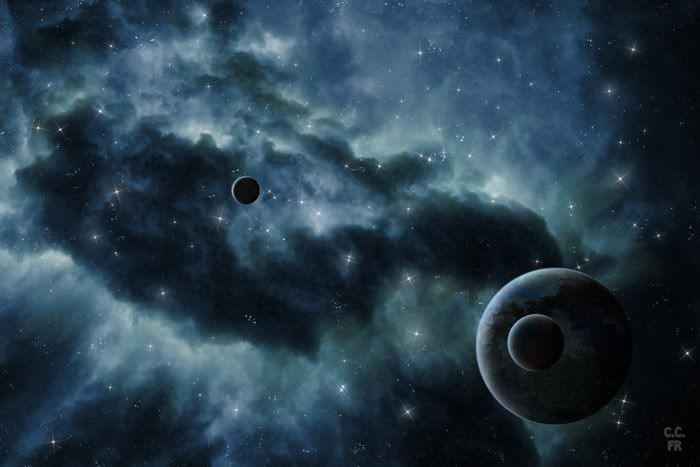
Posted on 05/09/2012 5:49:24 PM PDT by KevinDavis
WASHINGTON, May 8, 2012 -- /PRNewswire-USNewswire/ -- NASA's Spitzer Space Telescope has detected light emanating from a "super-Earth" planet beyond our solar system for the first time. While the planet is not habitable, the detection is a historic step toward the eventual search for signs of life on other planets.
(Excerpt) Read more at sacbee.com ...

Well..........ahem..............um, we are, so .......the "Super Earth" thing doesn't quite work.
From the article:
"In this method, a telescope gazes at a star as a planet circles behind it. When the planet disappears from view, the light from the star system dips ever so slightly, but enough that astronomers can determine how much light came from the planet itself. This information reveals the temperature of a planet, and, in some cases, its atmospheric components."
Never mind, the answer is in the article:
“The new information is consistent with a prior theory that 55 Cancri e is a water world: a rocky core surrounded by a layer of water in a “supercritical” state where it is both liquid and gas, and topped by a blanket of steam.”
 has detected light emanating from a "super-Earth" planet
has detected light emanating from a "super-Earth" planetemanating? EMANATING??? planets do NOT emit light, they reflect it!!!
and this is from NASA...
So far its still pretty tough to spot an earth similar mass rocky planet in the habitable zone.
If someone were looking for earth by the transit method they would have to be in line with us, spot the 12 hour transit, wait 365 days and spot the transit again.
For all the large and close orbit planets we’ve found, there must be thousands more in our galactic neighborhood that we can’t see yet. That’s not counting potentially habitable moons orbiting large planets.

True, as of now, we can mainly only detect planets that are much larger and/or much more massive than the Earth. There may also be lots of "stray" planets not orbiting any star: planets that were 'kicked out' of their original star systems via gravitational encounters with other stars or planets. Like Earth, they may be massive enough to have a molten core and therefore be able to generate their own energy to support life. Life something like we have around deep sea vents, although that life likely didn't originate there.

Well, so-called "failed stars" (Brown Dwarfs) certainly do. They are bodies not quite massive enough to become stars.
” To explore, strange new worlds” ...
Ponderin this sort of thing is my means of dealing with insomnia. (not to mention a great break from politics)
“Pretty soon we will see Earth size planets.”
Let’s just find one with no global warming which can support growth of lots and lots of vegetables and chicken grow on trees. Perhaps all the liberals will go there.
A planetary sauna? Get ready for the announcement of a Finnish space program.
Heck with that. Let us go and leave the liberals in the bed they crapped in.
Disclaimer: Opinions posted on Free Republic are those of the individual posters and do not necessarily represent the opinion of Free Republic or its management. All materials posted herein are protected by copyright law and the exemption for fair use of copyrighted works.